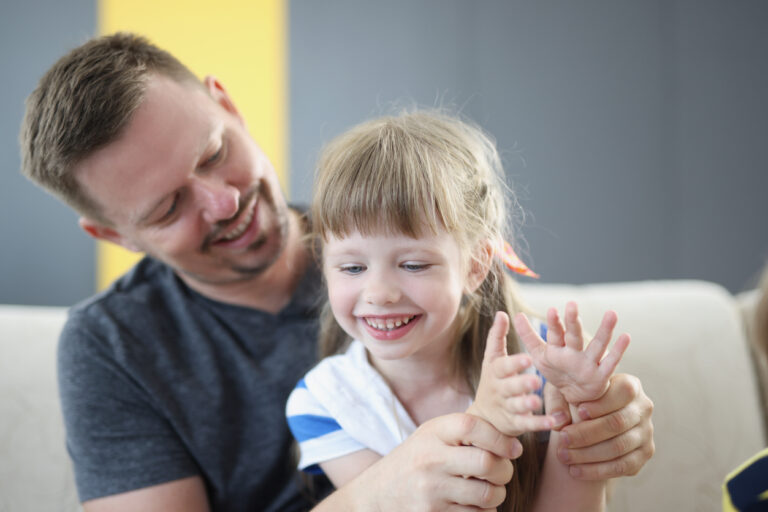
Tips and activities to help facilitate my child's speech and language development

Speech and language development in early childhood is crucial for several reasons:
1. Communication skills form the foundation for learning – Children need to be able to understand language and express themselves verbally in order to acquire concepts, follow instructions, share ideas and feelings, and participate in education. Delays can negatively impact literacy, academic achievement, and social relationships.
2. Speech and language are tied to cognitive development – Language processing utilizes complex neuro-cognitive systems. Impaired language development can be indicative of issues with executive functioning, reasoning, understanding abstraction, etc. This can limit a child’s ability to think through problems and progress to higher order thinking skills.
3. Social and emotional implications – Speaking and conversational abilities allow children to build relationships, interact positively with others, understand social cues, express needs, and regulate emotions and behavior. Language delays hamper a child’s ability to develop strong interpersonal skills for communicating needs and behaving appropriately.
4. Long term trajectory – Research shows early speech and language proficiency is correlated with achievement throughout K-12 schooling and even careers beyond school. Gaps tend to persist and potentially widen without high quality early intervention. Unidentified problems can lead to grade retention, poor literacy, and increased need for special services.
In sum, oral language proficiency in the early years plays a foundational role across cognitive, academic, and social-emotional domains. High quality language exposure and opportunities in toddlerhood and preschool years are crucial in preventing delays and putting all children on track for future success.

Here are some tips for frequently talking with your child to promote speech development:
Talk to your child frequently
Engage in back-and-forth conversations with your child to encourage them to express themselves verbally. For example, narrate your daily activities out loud and ask simple questions to prompt speech. (“Mommy is washing the dishes now. Can you hand me a plate?”)
Describe daily routines out loud
Explain what you are doing when getting dressed, eating meals, driving in the car and ask questions to engage your child in the chatter. (“Let’s put your arm through. Can you find the arm hole?”) Describe each step as you cook a meal or bake cookies and encourage your child to help. Talk about the textures, smells, ingredients and tools you are using. Discuss what you are doing as you give your child a bath, using concepts like wet, soapy, rinse, warm, and dry.
Have fun with interactive verbal games
Take turns making animal sounds, naming colors, counting objects, and using descriptive words. Model new vocabulary and expand on what your child says during the game.
The key is to integrate real-world conversation with your child into regular daily routines. Respond promptly when they coo or babble to demonstrate the power of communication. Making talking fun through songs, books, and games builds language naturally.

Read books out loud
Reading various books, magazines, and poems out loud exposes your child to new vocabulary and language concepts.
For example, read classic picture books like Goodnight Moon by Margaret Wise Brown and ask questions about the illustrations and characters. Read a range of children’s poems, like those from Where the Sidewalk Ends by Shel Silverstein, emphasizing the rhymes and rhythms. Look through age-appropriate magazines together, like Highlights for Children, discussing the photos and drawings.
Ask questions before, during, and after reading together to engage your child in conversation surrounding the stories and information. Point out interesting words and concepts and define them to build linguistic skills. Books open doors for language exploration – leverage storytime to instill a rich vocabulary.
Sing songs and recite nursery rhymes
Singing familiar children’s songs and reciting classic nursery rhymes helps your child learn new words and improve pronunciation and articulation.
For example, sing songs like “The Wheels on the Bus” or “Old MacDonald Had a Farm” using melodies and gestures your toddler recognizes. Recite rhymes like “Twinkle Twinkle Little Star” and “Hickory Dickory Dock” emphasizing the rhythms and rhyme patterns. You can make up new silly rhyming verses together about daily activities.
Use music and movement to highlight phonological components of language. Show how changing mouth shapes make different sounds. Sing the same songs over and over, leaving pause spaces for your child to fill in the words as they learn. Nursery rhyme books with illustrations provide another engaging model.
Infuse your child’s days with singing, chanting, and rhyming to advance early literacy. The connection between motion and language also plays a role. Linking words and phrases to gestures and actions activates more areas of the brain, reinforcing language learning.

Play language games
Playing interactive games with your child that involve naming objects, using descriptive words, asking/answering questions, following directions, and listening skills helps build communication abilities.
For example, play classic games like “I Spy” describing an object’s attributes for your child to guess what you see. Play body part identification games by pointing and naming the eyes, nose, toes, etc. Sing songs that name facial features then point and gesture along with the music.
Give simple directions for your child to follow like “stand up”, “clap your hands” and “find your red ball”. Ask lots of questions prompting 1-2 word responses, like “What’s this?” and celebrate attempts to answer. Model new vocabulary words in context during play, like “unique”, “gigantic”, “miniature” and “spectacular”. Meet your child’s language level but also introduce more advanced words through games.
The back-and-forth exchanges, repetition and contextualized exposures promote acquisition of linguistic concepts. Almost any daily activity can be reframed into a playful language-learning game

Encourage storytelling
Engage your child in telling stories by asking open-ended questions about their day, their drawings, or made up tales. This builds narrative skills.
For example, look at your child’s artwork together and ask them to describe what they drew using questions like “What’s happening in your picture?” and “Can you tell me a story about it?”. Ask about favorite parts of their day at preschool, like “What games did you play today?” or “Who did you sit next to at snack time?”. Model storytelling by sharing fun stories from your childhood, describing the settings, characters, and events. Encourage silly, imaginative stories by making up adventures for stuffed animals or acting out the Three Little Pigs with costumes and building blocks. Bashful children may need you to get the ball rolling with more prompts to uncover the events and details. Allow stories to unfold organically from whatever captures your child’s attention, without pressure or correction.

Limit screen time
Excessive media exposure has been linked to speech and language delays. Prioritize real world interactions and communication during waking hours.
The overuse of TV, phones, tablets and other screens may impair a young child’s language development. The two-dimensional, non-interactive nature of most screens fails to provide the dynamic conversational back-and-forth critical for building verbal skills. Additionally, screens tend to promote passive consumption rather than active speech production. Shows, videos and apps – no matter how educational – cannot match the cognitive benefits of real-life, multidimensional communication. Rapid scene changes and overstimulating content may also overload developing brains.
Aim to restrict screen time to no more than 30-60 minutes per day for children under 5. Instead nurture activities that incorporate movement, social connection, play and talking. Frequent face-to-face exchanges with caregivers during daily routines build neural pathways critical for speech and language advancement. While no screens is ideal, interactive video chatting may support language when designed appropriately for young learners.